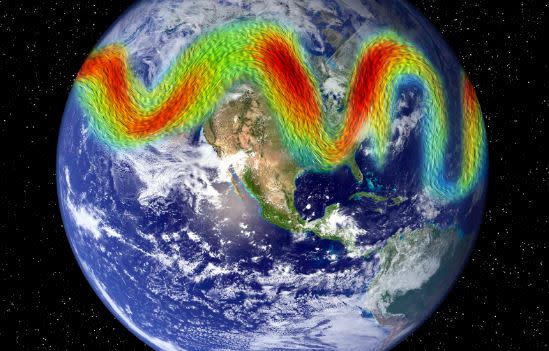Weather Wednesday: What is the jet stream?
LANSING, Mich. (WLNS) — You’ve probably heard meteorologists talking about the jet stream in the fall and winter months as it can be used as a tool to forecast temperature changes and even the type of precipitation an area sees.
However, it can also have a big impact on the weather we see all year long.
Jet streams form between warm air masses and cold air masses. Warmer air rises high into the atmosphere, while the colder air sinks. This creates a current, forming the jet stream.

These currents can move at about 110 miles per hour or more depending on the temperature difference between the air masses. The jet stream sits about five to nine miles above the earth’s surface and travels in a west to east direction.
The Earth has four primary jet streams: two polar jets near each of the poles, and two subtropical jet streams on either side of the Equator. The sub-tropical jet streams see warmer temperatures because that’s where the most direct sunlight is found, whereas the polar jets have colder air because it’s the part of the planet that receives the least sunlight.
Here in the northern hemisphere, we are closest to the polar jet stream. This jet stream separates cooler air to the north of it and warmer air to the south of it. During the seasons it tends to move, in winter the jet stream falls south and in the summer months it recedes to the north.
Spring and fall tend to be transitional seasons, in many senses, in spring we are starting to feel the summer warmth, and, in the fall, we start to feel the chill of winter on our doorstep. During these transitional seasons, the jet stream is moving, causing differences in the temperatures and winds in the air masses.
Weather systems usually follow the edge of a jet stream, that’s because there is a difference between colder air and warmer air. That difference oftentimes can create the perfect conditions for storms.
While on the other hand when the jet stream isn’t right overhead or nearby, weather systems can stall, bringing us similar weather for many days.
For the latest news, weather, sports, and streaming video, head to WLNS 6 News.
